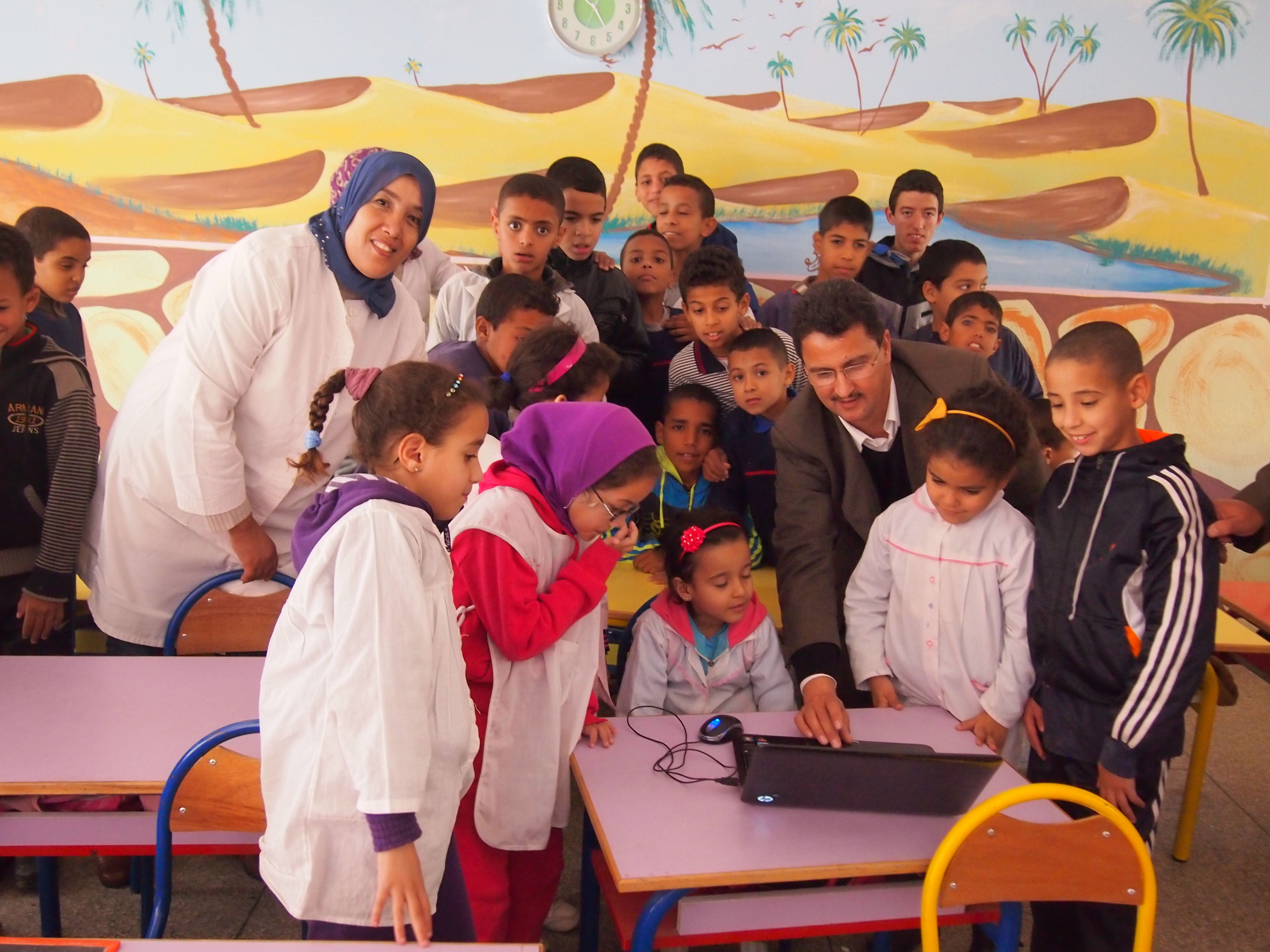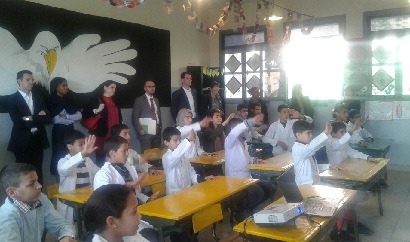|
Cycle 3 (2014 Deadline) Tools and resources to improve deaf educational access to science, technology, engineering, and mathematics U.S. Partner: Corinne Vinopol, Institute for Disabilities Research and Training, Inc.
Project Dates: October 2014 to September 2016  | | Abdelhadi Soudi shows students how to use the translation software in a Moroccan classroom. Credit: Abdelhadi Soudi |
Project Overview
This research project addressed the challenging research problem of meeting the educational needs of the deaf, who are underserved in education in general, and in STEM literacy, in particular. In Morocco, there is no secondary education for the deaf. There is a severe lack of instructional resources: all scientific information is Arabic/French audio and text-based, and there is no interpretation available into Moroccan Sign Language (MSL). There is no STEM content material available in MSL, and accordingly, there are no resources that interpret STEM from MSL to Standard Arabic. Deaf individuals who rely on sign language for communication present a unique communication challenge in education, since sign languages have no written representation as do oral languages; sign languages can only be represented via video, graphics, and animation. As a result, reading achievement scores of deaf individuals usually fall far short of those found among hearing children of comparable abilities.
This project was an effort to bridge the gap for the deaf, who are greatly underserved in science education. This research project will focus on creating the first MSL STEM thesaurus, enhanced by a concordancing software. The thesaurus will enable deaf individuals to describe signs and obtain Arabic word equivalents, concept graphics, and definitions in both MSL and Arabic. The thesaurus will be supported by a concordancer for better illustration and disambiguation of STEM terms. The project was designed to contribute to improving the technology for generating linguistically accurate sign language in general in the form of animations and video and graphic formats. The tools and resources developed will significantly improve the education of the deaf and will provide them with a better access to basic concepts in STEM fields.
Final Summary of Project Activities
 | | A US senate delegation observes a class for deaf children and the technology enabling their education Credit: Abdelhadi Soudi |
This research project aimed at developing tools and resources to facilitate Moroccan Deaf children's access to STEM. A Moroccan Sign Language STEM Thesaurus and a morphologically-enhanced Arabic Concordancer were developed. The MSL thesaurus operates by having MSL users identify the four cheremes for each hand for the STEM sign for which they want to find Arabic equivalents by using drop-down pictorial menus. The program searches the database for the sign that most closely matches the chereme choices. If the cheremes selected do not exactly match how the sign is coded in the database, the program will provide options of signs that are described similarly (the chereme version of spell-check). Accurately described signs and sign options are displayed as graphics and videos. Once users verify their intended sign, the program will display, in addition to the sign graphic and video, the comparable Arabic word(s) and the Arabic word definition(s) in text, MSL definition(s) in video, concept graphic(s), and word forms. This will help deaf students discern, when writing on STEM topics, which Arabic word to use for their sign. Users can choose a variety of output options for the depicted MSL sign (1. Main Graphic Sign which includes the corresponding Standard Arabic term, the concept and the Graphic sign; and 2. MSL video clip of the sign, 3. MSL definition, Standard Arabic definition, the concept graphic). The Concordancer enables the users to enter a STEM term or phrase and search for examples of how that term or phrase is used. The novelty of the Concordancer the team developed resides in its incorporation of morphological analysis into the software. This tool provides a list of examples of a particular term or combination of terms in its/their contexts drawn from a science corpus.
The tools developed by the project have been well received by the government, country educators, and has even received additional support from USAID. Future plans will expand upon the software and trainings with the goal of integrating them into the national curriculum. To this end, USAID is funding the expansion of these technological tools and trainings to 10 deaf schools across Morocco. The project has already had a significant impact on: - Directors of deaf schools and educators who are introduced to new techniques
- Policy makers who formulate decisions regarding education of deaf students
- Educators of deaf students
- Members of deaf associations
- Family members of deaf students
PEER Cycle 3 Grant Recipients
|
|
|
|





